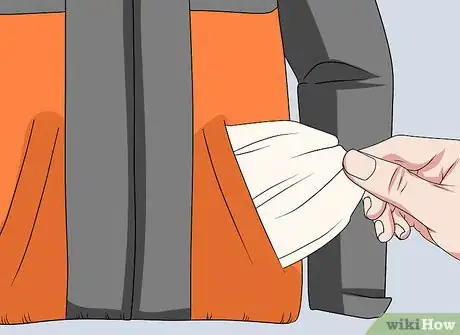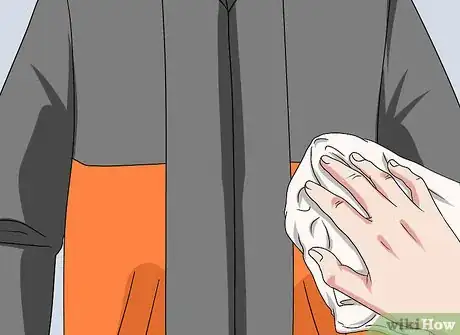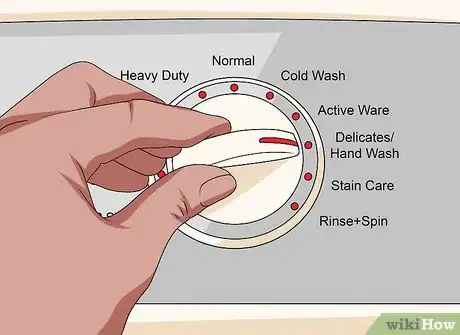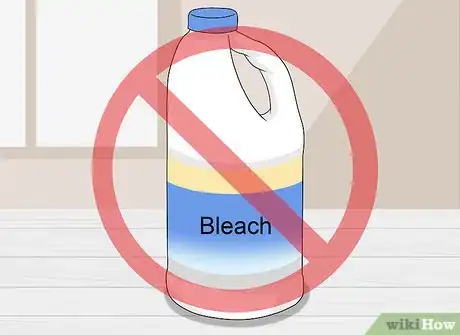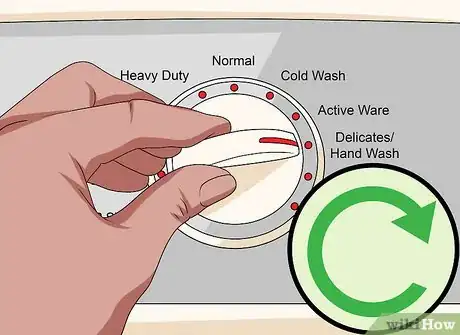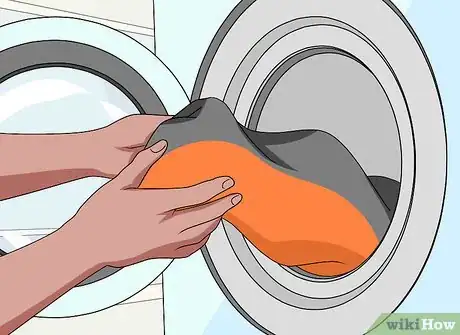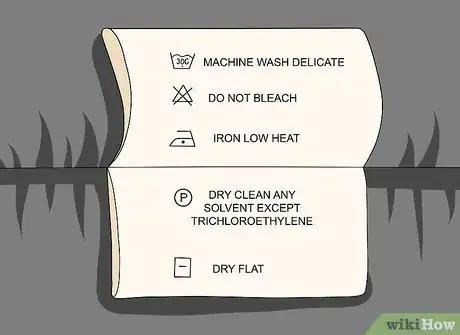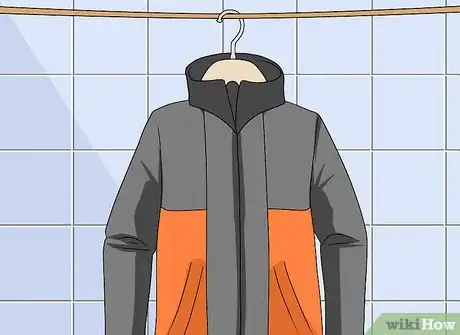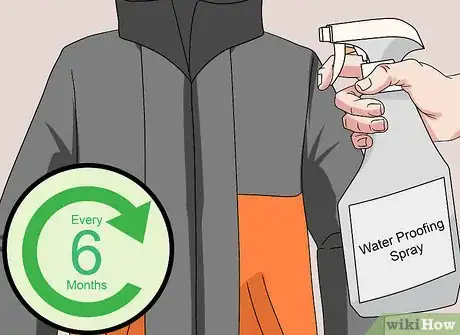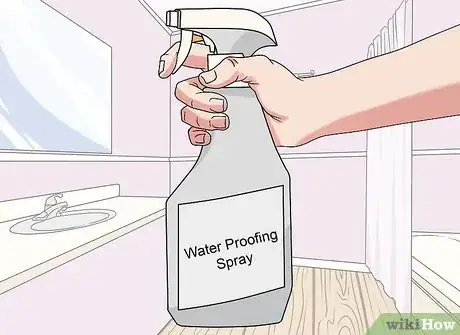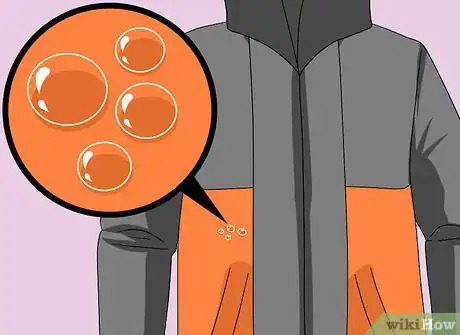This article was co-authored by wikiHow Staff. Our trained team of editors and researchers validate articles for accuracy and comprehensiveness. wikiHow's Content Management Team carefully monitors the work from our editorial staff to ensure that each article is backed by trusted research and meets our high quality standards.
There are 13 references cited in this article, which can be found at the bottom of the page.
This article has been viewed 42,571 times.
Learn more...
Wearing a waterproof jacket out in the rain is not enough to keep it clean. If your rain jacket is dirty or starts to smell funny, put it in the washer with a mild detergent and on a gentle spin cycle. Although most rain jackets are washed in a similar way, washing instructions may vary based on your rain jacket's material. Before you wash your jacket, always check its care label to avoid damaging it.
Steps
Preparing for Washing
-
1Check your jacket pockets and remove all items. Sending a jacket through the washing machine without emptying its pockets can result in damaged belongings. After you've checked all pockets on the outside, remember to check pockets on the inside of the jacket to make sure you don't forget anything.
-
2Zip your jacket up and button or fasten all straps. Open straps and zippers can snag in the washer and rip your jacket. Inspect your jacket carefully to make sure you've done up all the zippers and buttoned down every strap.[1]
- Check for removable trimmings (like hoods or collars) and remove them before putting your jacket in the washer.
- Inspect your jacket for rips and tears. Sew all rips before putting your jacket in the washer.
Advertisement -
3Wipe off all visible debris with a brush or washcloth. Before you put your jacket in the washer, you'll want to remove as much dirt and grit as you can. Use a dirt brush or a microfiber cloth to scrub your jacket in circular motions. When you can no longer remove any debris, your jacket is ready to go in the washer.[2]
-
4Check the care label for additional instructions. While most rain jackets will follow a similar washing routine, some may be made from fabrics that require additional instructions. Read the jacket's care label to make sure you don't miss any instructions unique to your jacket.[3]
- If the jacket is non-machine washable, for example, you will need to clean it by hand.
Machine Washing
-
1Use a detergent made for waterproof clothing. Most detergents, soap powders, and conditioners can damage the waterproof coating on your jacket. Purchase a specialized mild detergent for washing your jacket. Check for leftover detergent in the machine slot to avoid getting abrasive residue on your jacket.[4]
- Clean the soap slot thoroughly before you put the jacket in the washer, whether you notice residue or not.
-
2Wash your jacket on the delicate cycle. Choosing a gentle setting on your washer can prevent your jacket from ripping or from damaging its waterproof coating. If your washer does not have a specific delicate cycle, choose a slow spin cycle.[5]
- Make sure the setting you choose uses warm water. Cold or hot water is too abrasive for most jackets.[6]
-
3Avoid bleaching your jacket. If your jacket has persistent stains, do not use bleach to clean them off. Bleach can permanently damage the waterproof coating and potentially eat through delicate fabrics. Try alternative methods to remove stains.
- Check your jacket's care label for its fabric blend to research which stain removal methods would work well with its jacket.
-
4Run your jacket through an additional rinse cycle. When the first cycle is over, run your washer again on the rinse cycle to flush out residual detergent. Then, take your jacket out of the washer and check it for soapy residue. If your jacket feels clean, it is ready to dry. But if it feels gritty or filmy, run it through another rinse cycle.[7]
Drying
-
1Dry your jacket immediately to prevent wrinkles. Letting your jacket sit for too long in the washer can create unsightly wrinkles. Do not leave your jacket in the washer all day while you're out of the house. Keep a close eye on the washing machine and, once it's done, begin the drying process.[8]
-
2Check the label for specific drying instructions. Some rain jackets are dryer-friendly. Others, however, do not respond well to a dryer's intense heat. If the label does not have specific drying instructions, hang your jacket up to dry to be safe.[9]
-
3Place your jacket in the dryer on a gentle setting. If your dryer does not have a specified gentle setting, make sure you set it to low heat. After the dryer has gone through a cycle, check it for wetness. If it is still damp, run it through again.[10]
-
4
Reproofing
-
1Reproof your rain jacket if its effectiveness wears off. If you notice that water no longer beads off your jacket but tends to soak into the fabric, you may want to reproof your jacket. It is recommended that you reproof rain jackets every 6 months for maintenance or when your jacket no longer keeps you dry.
-
2Clean your jacket before reproofing it. Your rain jacket will need to be washed before you reproof it. Dirt or soapy residue can diminish the reproofing efficiency. Because most reproofing sprays will not stick to wet surfaces, you will also need to dry your jacket.[12]
-
3Spray the jacket with a waterproofing spray. To choose the right waterproofing spray, research which water repellant sprays work well with your jacket's fabric. At a distance of about 4–6 inches (10–15 cm), coat the jacket with the waterproofing spray. Make sure you coat every inch of the jacket's outer shell.[13]
-
4Test your reproofing job by sprinkling water on the jacket. If the water droplets bead up, your jacket is once again water repellant. If your jacket absorbs the water, however, then you may not have sprayed it enough. The amount you sprinkle on the jacket should be small so you can closely measure its response.[14]
- While many sprays are immediate, some may take time to gain full effect. Read the spray instructions to check if you'll need to wait before testing it.
- Dry your jacket off, then spray it again or use a stronger reproofing spray if it absorbs the water.
Warnings
- Avoid cleaners that were not made for delicates or waterproof clothing, as regular clothes cleaners can be abrasive to rain jackets.⧼thumbs_response⧽
Things You'll Need
- Dirt brush
- Washcloth
- Mild detergent
- Reproofing spray
- Clothesline, clothes rack, or clothing rod (optional)
References
- ↑ https://www.mec.ca/en/explore/caring-for-a-waterproof-jacket
- ↑ https://www.youtube.com/watch?v=WZPx0R2LGrs&feature=youtu.be&t=26
- ↑ http://wildrunning.net/fibertec-review-and-how-to-wash-and-re-proof-waterproof-fabrics/
- ↑ http://www.paddypallin.com.au/blog/tips-on-caring-for-your-rain-jacket/
- ↑ https://www.backpacker.com/gear/the-fix-revive-your-rain-jacket
- ↑ https://skyaboveus.com/misc/How-to-waterproof-a-rain-jacket
- ↑ https://www.ifixit.com/Guide/How+to+Wash+a+Waterproof+Jacket/24192
- ↑ https://www.hunker.com/13422494/washing-instructions-for-nylon-jackets
- ↑ https://www.outsideonline.com/2058116/how-should-i-clean-my-waterproof-shell-and-down-jacket
- ↑ https://www.active.com/outdoors/articles/rain-gear-maintanence
- ↑ https://www.livingonadime.com/air-drying-clothes-clothesline/
- ↑ https://www.youtube.com/watch?v=vxRfOclkYuU&feature=youtu.be&t=49
- ↑ http://www.popularmechanics.com/technology/gear/a10761/make-your-old-raincoat-waterproof-again-16925311/
- ↑ https://www.youtube.com/watch?v=vxRfOclkYuU&feature=youtu.be&t=49
